

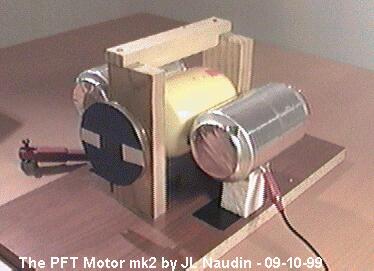
The
The
By Jean-Louis Naudin
created on September 11th, 1999 - JLNLabs - Last update September 20th, 1999
ThePFT Motor mk2 uses two asymmetrical capacitors for generating a continuous rotation of the rotor at high speed. The rotor is composed of a dielectric ( a commonplastic ) cylinder with an aluminum sheet fixed in the innersurface, this is the rotating armature of the cylinder capacitor.Two aluminum cylinders ( length: 115mm, diam.: 65mm ) have been used as the fixed armature of the capacitor. The measured capacitance is about 14pF. One aluminum cylinder has been connected to +28kV DC and the other to the ground (OV).
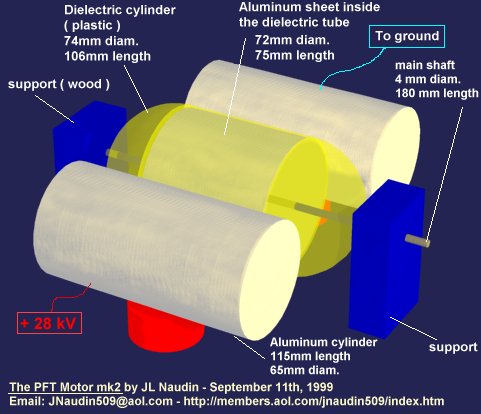
With the rotor blocked, the leakage current was only 1uA, so the coronna effect was insignificant and this shows clearly that this motor is not a coronna motor. Some other tests have been done for checking if the E-Field induction effect is the source of the high speed rotation ( see :
The PFTMotor mk2 turns at high speed :
The
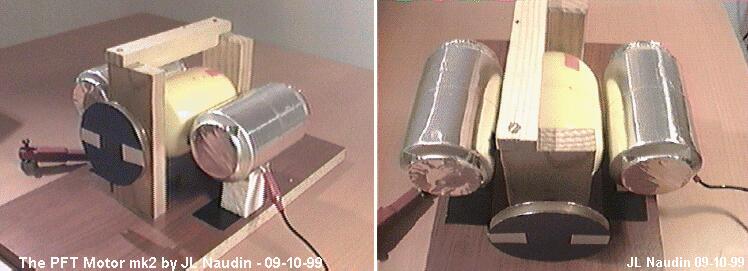
The gap between the cylinders and therotor is about 1.5mm. You see also the aluminum wheel with twowhite marks for measuring the turn speed with an optical tachometer.
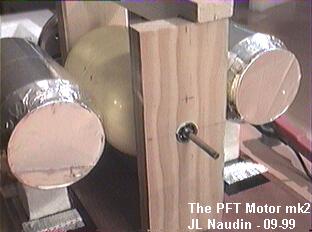
The 4mm steel shaft has been mounted with two 12mm ball bearings fixed on the wooden supports (see thepicture).
Experimental setup: The
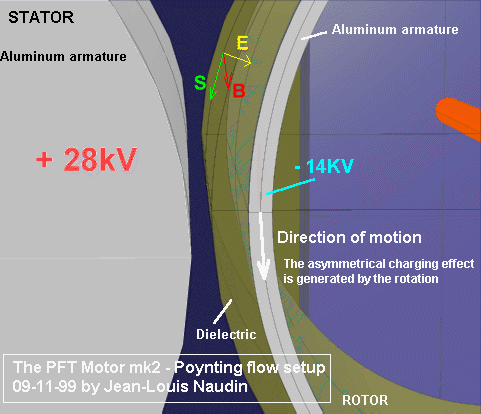
Spinningof asymmetrical E-fields is the main key of this motor
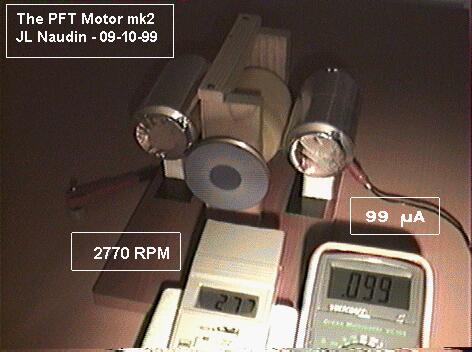
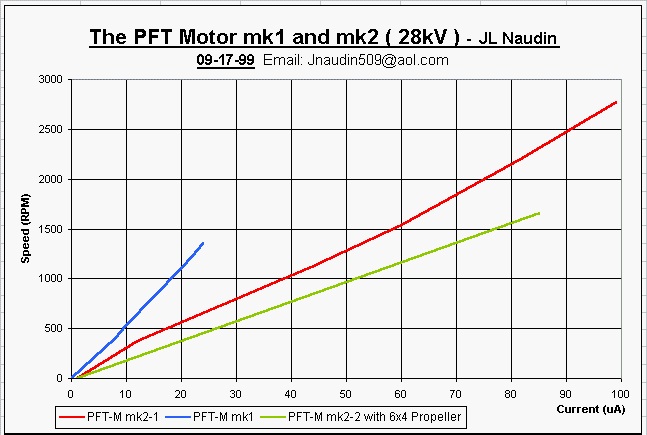
See also:
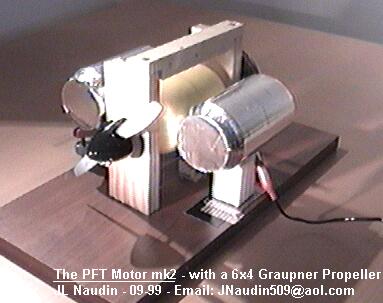
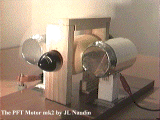
The PFT Motor mk2 is fully capable to runat high speed with a propeller ( a 6/4" pitch, 15/10 cm )Graupner
Additional notes : "InMarch 1971,


